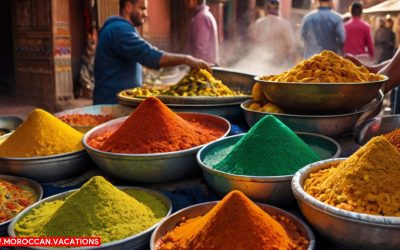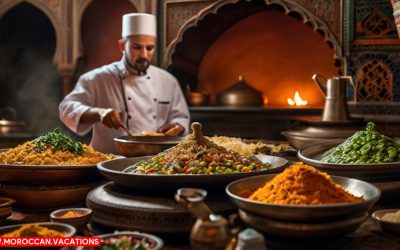Traditional Moroccan Dishes
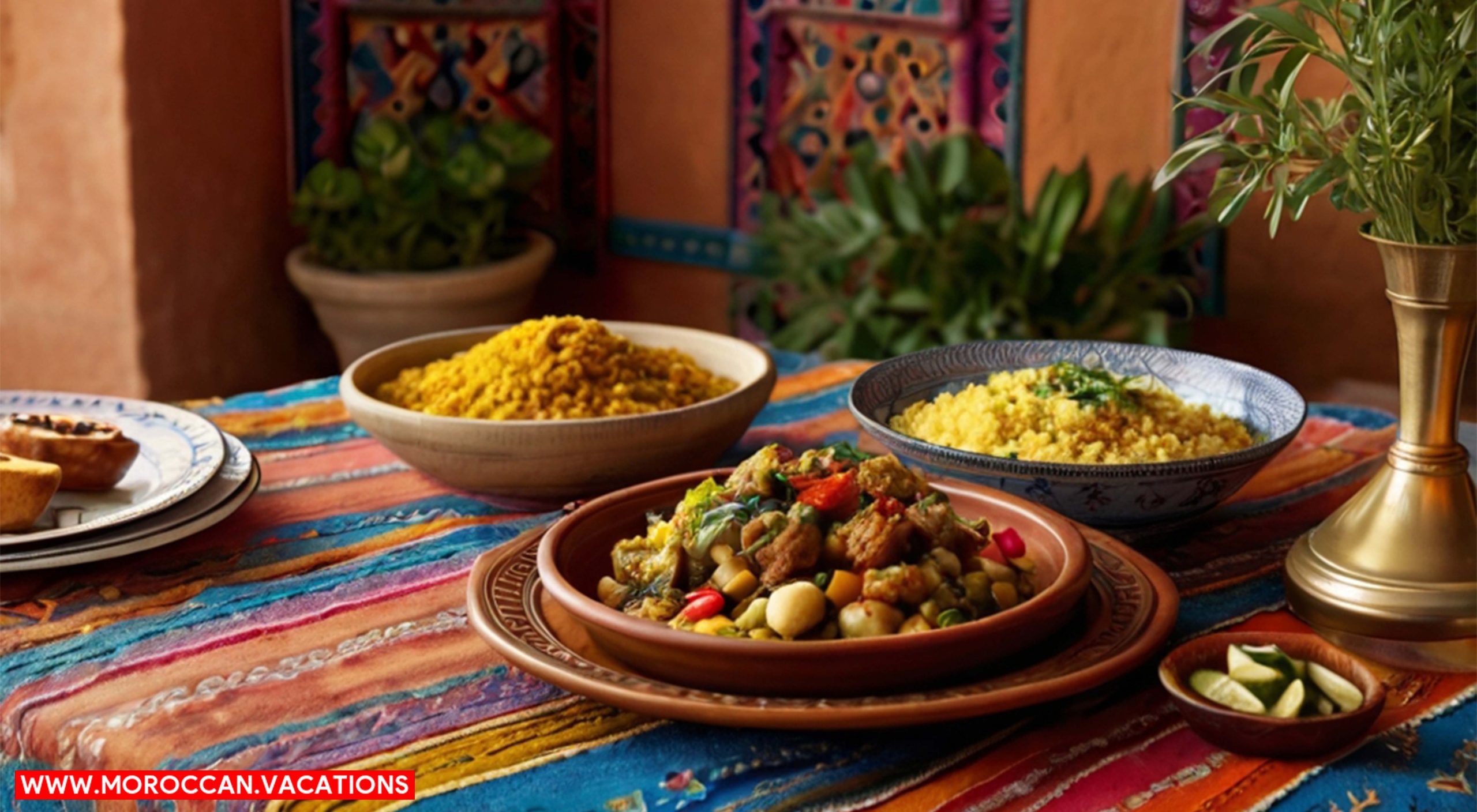

Essential Moroccan Spices
To master the art of Moroccan cooking in Marrakesh, you’ll need to familiarize yourself with the essential Moroccan spices. These spices are the key to unlocking the unique flavors of Moroccan cuisine. One of the most important elements in Moroccan cooking is the use of spice blends. These blends are carefully crafted to create a perfect balance of flavors, adding depth and complexity to every dish. One of the most popular Moroccan spice blends is Ras el Hanout. This blend typically includes a combination of cinnamon, cumin, coriander, ginger, turmeric, and cardamom, among other spices. It is used in various dishes, such as tagines and couscous, to add a rich and aromatic flavor. Another essential spice in Moroccan cuisine is cumin. This warm and earthy spice is commonly used in meat dishes, soups, and stews. It adds a distinct flavor that is both savory and slightly nutty. Coriander is also widely used in Moroccan cooking. Its subtle citrusy flavor adds a refreshing note to dishes like salads, marinades, and sauces. The use of these Moroccan spice blends and individual spices is what sets Moroccan cuisine apart. By incorporating these flavors into your cooking, you can create dishes that are truly authentic and full of the unique Moroccan flair. So, get ready to embark on a culinary adventure and explore the world of Moroccan spices.Exploring Marrakesh’s Food Markets
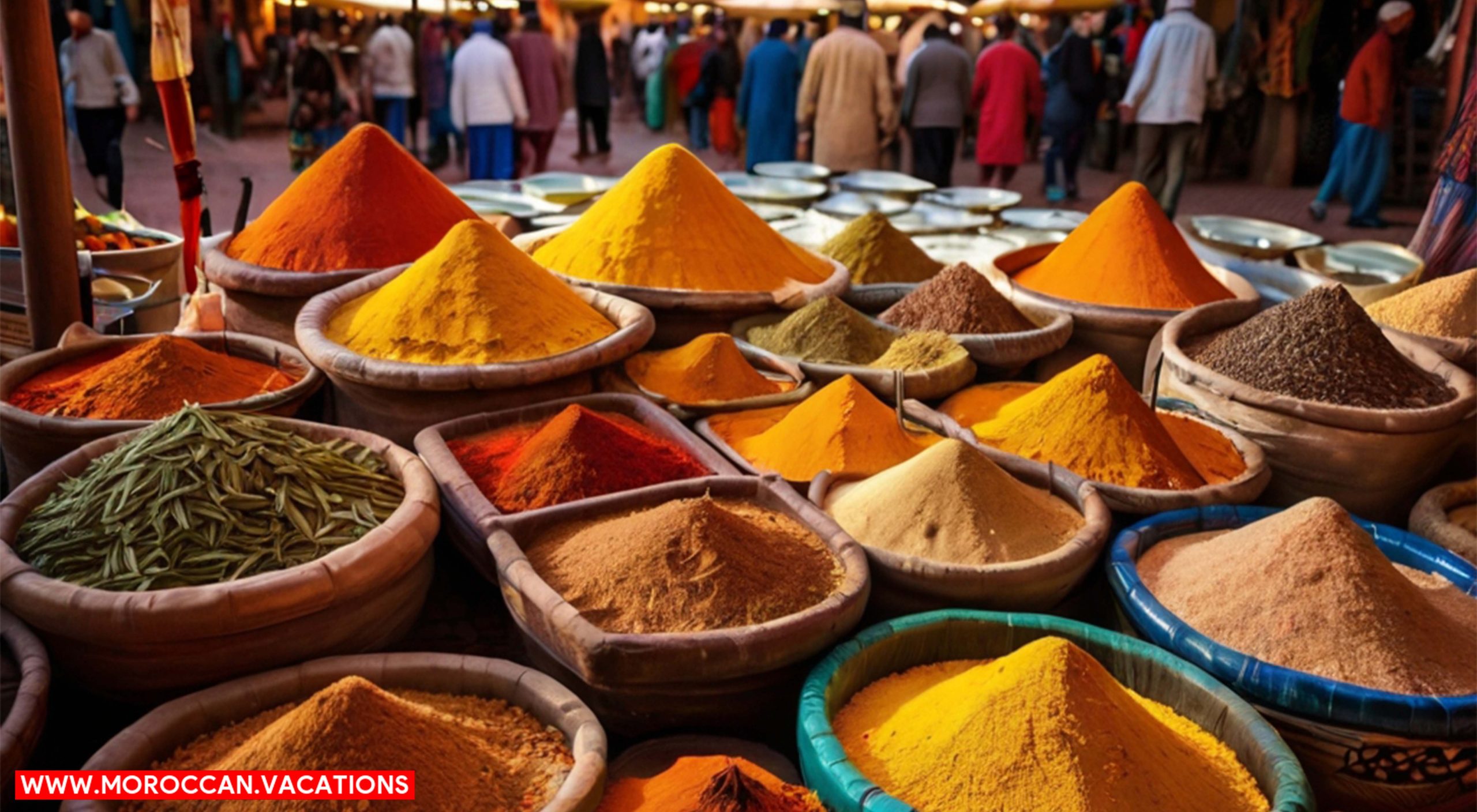

Techniques for Authentic Moroccan Cooking
As you delve deeper into Marrakesh’s food markets and immerse yourself in the vibrant culinary scene, mastering the techniques for authentic Moroccan cooking becomes an essential part of your culinary journey. To truly understand the flavors and traditions of Moroccan cuisine, many visitors turn to the popular Moroccan cooking schools scattered throughout the city. These schools offer immersive experiences where you can learn the techniques from expert chefs who have spent years perfecting their craft. One of the key aspects of mastering authentic Moroccan cooking is learning how to balance the spices and flavors that define the cuisine. Traditional Moroccan recipes often feature a combination of spices such as cumin, cinnamon, ginger, and saffron. However, in recent years, there has been a rise in modern twists on traditional Moroccan recipes, incorporating new ingredients and techniques to create unique and exciting dishes. In these cooking schools, you will learn how to prepare classic Moroccan dishes like tagines, couscous, and pastillas. You will also discover the art of slow cooking, which is a fundamental technique in Moroccan cuisine. The slow cooking process allows the flavors to meld together, resulting in a rich and aromatic dish. Whether you are a seasoned cook or a beginner, these cooking schools provide a hands-on experience that will deepen your understanding of Moroccan cuisine. So, embrace the opportunity to learn from the experts and unlock the secrets of authentic Moroccan cooking.Tips for Perfecting Moroccan Tagines


| Tips for Perfecting Moroccan Tagines | |
|---|---|
| Choose the right tagine pot | Use a traditional clay or ceramic tagine pot to ensure even heat distribution. This will help to tenderize the meat and infuse the flavors of the spices. |
| Layer the ingredients | Layering the ingredients in the tagine pot is key to achieving a well-balanced dish. Start with a base of onions and garlic, followed by your choice of meat and vegetables. |
| Use the right spices | Moroccan cuisine is known for its bold and aromatic spices. Common spices used in tagines include cumin, coriander, turmeric, and cinnamon. Experiment with different spice combinations to find your favorite flavors. |
| Cook on low heat | Tagines are traditionally cooked on low heat for several hours to allow the flavors to develop and the meat to become tender. Avoid the temptation to rush the cooking process by increasing the heat. |
| Serve with couscous or bread | Tagines are often served with couscous or crusty bread to soak up the flavorful sauce. The combination of tender meat, aromatic spices, and fluffy couscous or bread is a true delight. |
Sweet Delights: Moroccan Desserts
Now let’s explore the sweet side of Moroccan cuisine with an array of mouthwatering desserts that will satisfy your cravings. Moroccan desserts are known for their rich flavors, delicate textures, and exotic ingredients. One popular Moroccan sweet is the traditional Moroccan pastry, which is made using a variety of techniques and ingredients. From flaky puff pastry filled with almonds and honey to soft semolina cakes soaked in sweet syrup, Moroccan pastry recipes offer a delightful blend of sweetness and complexity. Another popular Moroccan sweet is the Moroccan orange cake, a moist and citrusy treat that is perfect for afternoon tea. Made with fresh orange juice and zest, this cake is bursting with bright flavors that will transport you to the sunny streets of Marrakesh. Moroccan almond cookies are also a beloved dessert, with their nutty flavor and chewy texture. These cookies are often dusted with powdered sugar and served with a cup of mint tea, a classic Moroccan pairing. Whether you have a sweet tooth or simply want to experience the flavors of Morocco, these popular Moroccan sweets are sure to leave you craving for more.Vegetarian and Vegan Moroccan Recipes
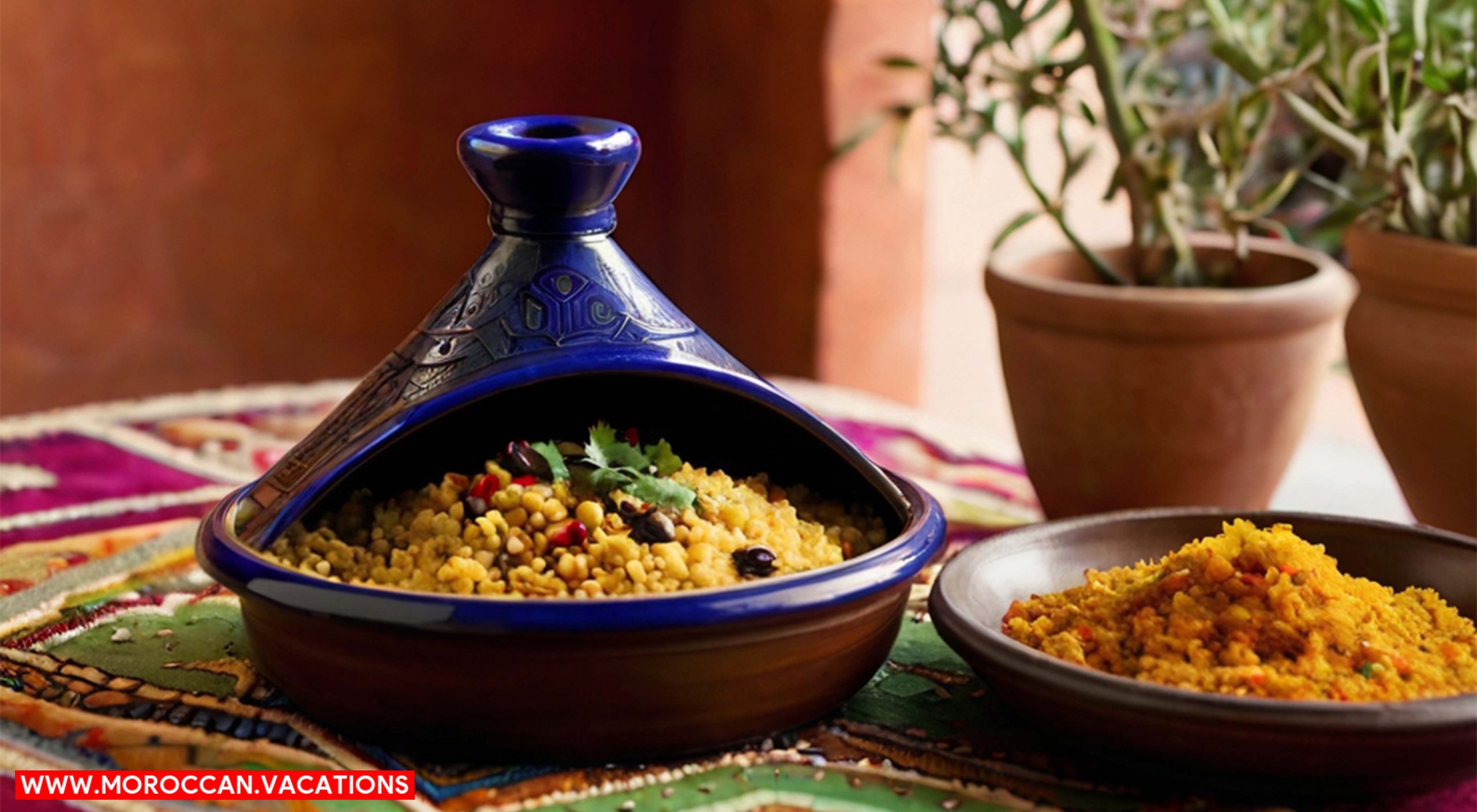

Hosting a Moroccan Dinner Party
Prepare for a memorable Moroccan dinner party by creating an inviting and vibrant atmosphere for your guests. Hosting a Moroccan dinner party is not only about the delicious food but also about immersing your guests in the rich culture and traditions of Morocco. Here are some tips to help you set the scene and ensure a successful evening:- Moroccan Dinner Party Themes: Choose a theme that reflects the enchanting Moroccan culture. Whether it’s a traditional Moroccan feast, a Moroccan tea party, or a Moroccan-inspired cocktail party, make sure to incorporate elements like Moroccan lanterns, colorful textiles, and beautiful Moroccan music to create an authentic ambiance.
- Decorations: Set the stage by decorating your space with Moroccan-inspired decor. Hang colorful tapestries on the walls, scatter vibrant cushions on the floor, and place Moroccan lanterns around the room to create a warm and inviting atmosphere.
- Table Setting: Pay attention to the details when setting the table. Use colorful tablecloths, beautiful Moroccan ceramics, and intricate silverware to create an elegant and stylish table setting. Don’t forget to add fresh flowers or aromatic herbs as a centerpiece to add a touch of natural beauty.
- Hosting Etiquette: In Moroccan culture, hospitality is highly valued. Make your guests feel welcomed by greeting them with a warm smile and offering them traditional Moroccan tea or a refreshing glass of mint lemonade upon arrival. Throughout the evening, ensure your guests’ needs are attended to and engage in thoughtful conversations to create a friendly and enjoyable atmosphere.


Samira Amrani
The passionate author behind Moroccan Vacations, sharing her expertise and love for Moroccan culture, cuisine, and travel experiences to inspire wanderlust in every reader.
Related Articles
Vegetarian and Vegan Options in Marrakesh Street Food
Traditional Moroccan Vegetarian Tagines Are you tired of feeling limited when it comes to finding vegetarian and vegan options in Marrakesh's bustling street food scene? Well, we've got some good news for you! Get ready to embark on a culinary adventure filled with...
Street Food Safety Tips for Enjoying Marrakesh's Local Cuisine
Research Local Food Regulations Did you know that Marrakesh is home to a vibrant street food scene, offering a rich variety of local cuisine? To fully enjoy these culinary delights while ensuring your health and safety, it's important to follow a few simple tips. In...
The Influence of Arab Cuisine on Moroccan Culinary Traditions
Historical Background of Arab Influence Imagine yourself transported to the vibrant streets of Morocco, where the tantalizing aroma of spices fills the air and the sizzle of food cooking on open flames entices your senses. In this culinary paradise, the influence of...

